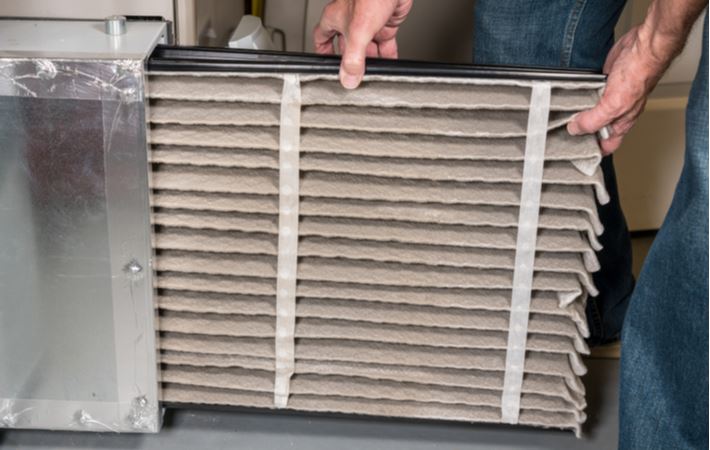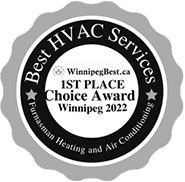Furnaces are designed to heat our homes, so a furnace blowing cold air instead of warm air is a huge problem. Like many problems, there are a variety of possible culprits but don’t call a professional just yet. Depending on the source of the problem, you may be able to fix it yourself with minimal hassle.
To help you troubleshoot this problem, here are a few things you can try.
Check Your Thermostat Settings
The problem: If your furnace works fine most of the time, but then randomly begins blowing cold air sometimes, your problem may be a simple setting issue. The fan in your furnace controls the blower, which is the mechanism that is responsible for moving warm air throughout your home. If your fan is set to “on,” that means that the blower will run continuously, whether the furnace is heating air or not.
The solution: To remedy the situation, check your thermostat and make sure that the fan is set to “auto,” not “on.” This will ensure that your furnace only circulates air when more heat is needed.
Check Your Furnace’s Air Filter

The problem: A dirty air filter may be the cause of your temperature woes. Dirty air filters block airflow over the furnace’s heat exchanger, which causes it to overheat. To prevent damage to the heat exchanger, your furnace has a built-in high limit switch, which shuts off the furnace’s burners if it’s in danger of overheating.
The solution: Turn off your furnace using your thermostat and check your furnace air filter. If the filter is dirty, it should be changed. After the filter has been swapped out, you should be able to reset your furnace. However, if you have problems resetting your furnace, check your owner’s manual or call a professional for assistance.
Check Your Furnace’s Pilot Light
The problem: Older furnaces are often equipped with a pilot light. If the pilot light is off, that means that the burners won’t light, and no heat will be produced.
The solution: Try resetting your pilot light.
- Step 1: First, you will need to turn off your furnace using your thermostat. To do this, you should turn your thermostat from heat to off.
- Step 2: Consult your owner’s manual for the location of the pilot light assembly and reset switch. This switch is likely located near the bottom of your furnace. The switch will look like a small knob with three settings: pilot, off, and on.
- Step 3: Turn the knob to the off position and wait five minutes
- Step 4: Turn the knob to pilot and press it down. This will restart the flow of gas to the pilot light. As you press down, the knob carefully hold a lighter to the pilot opening until the flame restarts. When the flame lights, you should see a steady blue cone of fire that sits in the middle of the thermocouple (the small copper bar).
- Step 5: Turn the knob to the on position. This should ignite your furnace.
- Step 6: Turn your furnace on using your thermostat. To do this, change your thermostat back to heat.
If you can’t get your pilot light to ignite or stay lit, you should call in a professional for help. Your problem may be a malfunctioning thermocouple, which will need to be replaced.
Check Your Condensate Line
The problem: If you have a high-efficiency furnace, the culprit may be your condensate line. If this is the case, you should see water pooling around your furnace. A pool of water likely indicates that your condensate line is blocked, which is causing your furnace to shut down.
Common causes of condensate line blockage include:
- Dust
- Dirt
- Ice
- Mould
Your line may also be malfunctioning because of a broken condensate pump. If this is the case, you will need to call in a professional for assistance.
The solution: If your condensate pump is blocked by dust, dirt, or mould, you can unclog your condensate line with relative ease. If you are unsure how to do this, you can consult your owner’s manual or call a professional for assistance.
If the blockage is caused by ice, you can wrap your condensate line with pipe insulation and heat tape. Consult your owner’s manual for the best way to melt the ice without risking damage to your furnace or call an expert for assistance.
If you are unsure what is causing your furnace to blow cold air, or you are unsure how to fix the problem, it may be time to call in a professional for assistance. You don’t want to risk damaging your furnace, creating unsafe conditions, or making the problem worse.







